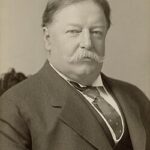The Ballinger-Pinchot Affair erupted when President Taft dismissed popular Chief Forester Gifford Pinchot in January 1910. This controversial decision stemmed from Pinchot’s public criticism of Interior Secretary Richard Ballinger. The conflict revealed deep philosophical divisions over conservation policy within the Republican Party.
The Conservation Conflict
Richard Ballinger had reversed several conservation policies established under Theodore Roosevelt. He reopened Alaskan coal lands to private development that Roosevelt had previously protected. Ballinger also restored water power sites to public sale that Pinchot’s Forest Service had withdrawn. These actions directly contradicted the progressive conservation movement’s core principles. ⚠️ Pinchot viewed Ballinger’s policies as favoring corporate interests over environmental protection.
Pinchot’s Public Challenge
Gifford Pinchot openly challenged Ballinger’s authority through speeches and letters to Congress. He accused the Interior Secretary of corruption and betraying conservation principles. Pinchot’s subordinate, Louis Glavis, had earlier made similar allegations against Ballinger. 📊 Congressional investigations revealed questionable connections between Ballinger and private mining interests. Taft initially supported Ballinger despite mounting evidence of impropriety.
The Ballinger-Pinchot Affair Escalates
Taft faced an impossible choice between loyalty to his cabinet and popular conservation policies. Pinchot deliberately forced the president’s hand by continuing his public criticism. The president ultimately chose administrative discipline over political expediency. 💰 Corporate interests celebrated Ballinger’s retention while conservationists condemned Taft’s decision.
Impact:
The Ballinger-Pinchot Affair created devastating long-term consequences for President Taft and the Republican Party. The controversy permanently damaged Taft’s relationship with Theodore Roosevelt and progressive Republicans. This political fracture would prove irreparable and reshape American politics for generations.
Republican Party Fracture
The firing of Pinchot exposed fundamental ideological divisions within the Republican Party. Progressive Republicans rallied around Roosevelt’s conservation legacy against Taft’s pro-business stance. 🔥 The controversy accelerated the party’s split between conservative and progressive factions. Wisconsin Senator Robert La Follette led congressional opposition to Taft’s policies. The president lost crucial support from western Republicans who championed conservation.
Roosevelt’s Political Return
Theodore Roosevelt felt personally betrayed by Taft’s handling of the Ballinger-Pinchot Affair. Pinchot was Roosevelt’s close friend and conservation policy architect. The former president began publicly criticizing his chosen successor’s administration. 📉 Taft’s approval ratings plummeted among progressive voters nationwide. Roosevelt ultimately launched his own presidential campaign in 1912 against Taft.
Electoral Consequences
The Republican split virtually guaranteed Democratic victory in 1912. Woodrow Wilson won the presidency with only 42% of the popular vote. The divided Republican ticket allowed Democrats to capture both Congress and the White House. 🌍 This realignment shifted American politics toward progressive reforms under Democratic leadership. The Ballinger-Pinchot Affair thus indirectly enabled Wilson’s ambitious domestic agenda including antitrust legislation.
